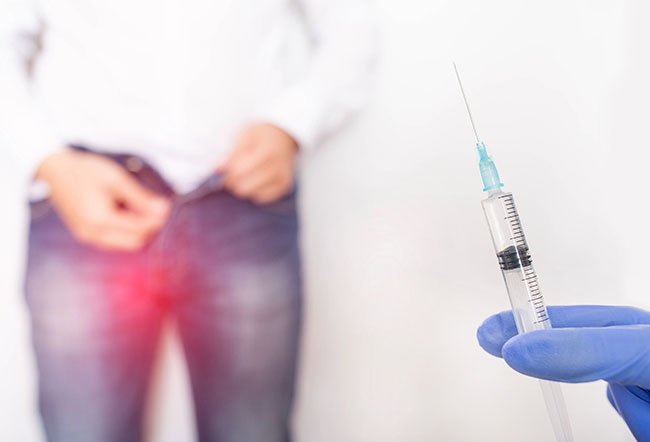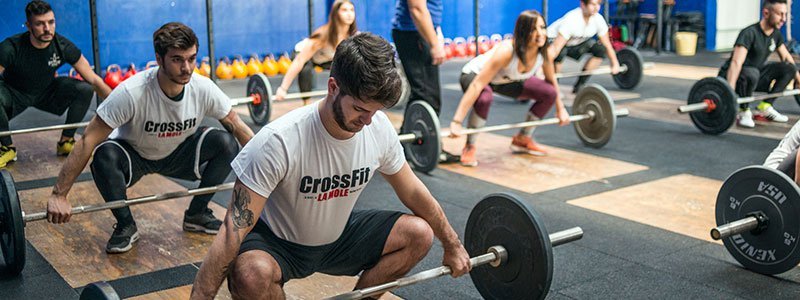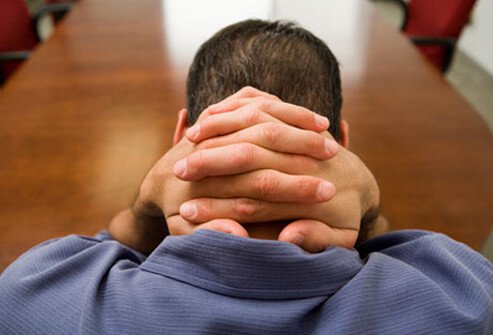
Varicoceles are believed to be caused by defective valves in the veins within the scrotum, just above the testicles.
There are no drugs to treat or prevent varicoceles. However, acetaminophen or ibuprofen can help relieve the pain caused by varicocele along with scrotal support. When needed, surgery is the main treatment option. The doctor may recommend embolization (briefly blocking the veins), which is a nonsurgical treatment option if it suits your case.
In most cases, the symptoms get better with rest, scrotal support, and painkillers. Treatment is necessary in the following cases:
- Pain and discomfort
- A low sperm count
- Infertility has continued for a minimum of two years and is otherwise unexplained
- You are a young boy
Surgical treatment for varicoceles
There are two surgical options, including:
- Varicocelectomy: Open surgery is performed under local or general anesthesia. The surgeon will access the area through the groin or, less commonly, the abdomen or upper thigh. Using ultrasound and surgical microscopes, they will tighten, sclerose, or tie the affected veins to reroute the blood through other, healthier vessels. Post-surgical pain is generally minimal, and you can soon return to normal activities.
- Laparoscopic surgery: The surgeon makes a little incision within the abdomen and passes a small surgical instrument through the opening.
Risks of surgery
These procedures are relatively safe but, like the other surgeries, there are some risks:
- Artery damage
- Further testicular atrophy
- Infection
- Bruising, swelling, or a buildup of fluids in the surgical area
- Abdominal pain
Rarely, a renal vein thrombosis may develop. This can affect the kidney and may need further surgery. Sometimes, the veins through which the blood passes after surgery get enlarged, which may require further treatment.
Recovery
You can probably return to work within one or two days after surgery. However, avoid any exercises for at least two weeks.
- Recovery after embolization is a little faster, but you will still need a minimum of two days off of work. You can be back at the gym in about 10 days. Your varicocele could be more likely to come back after this treatment, but sometimes it is the best choice.
- If you have got the procedure to assist with fertility, the doctor will test you in three to four months because new sperm take that long to grow.
- You will probably see improvements in your sperm count in six months, but it could take a year in over half of the men with infertility.

QUESTION
Testosterone is a chemical found only in men. See Answer
Embolization
It could be a nonsurgical procedure that takes about an hour and a half to finish. To prevent the flow of blood to the varicocele, a catheter (small tube) is inserted through a tiny low incision within the groin.
- Venography is employed to visually guide the catheter and highlight the varicocele on an X-ray. The catheter is then accustomed to insert tiny coils into the dilated vein to divert the blood flow. This relieves pressure, reduces swelling, and restores normal circulation.
- During the procedure, light sedation (also called twilight anesthesia) is used, so that the person does not lose consciousness.
- Stitches are not required. Generally, normal activity is resumed within two days.
What are the symptoms of varicoceles?
Possible signs and symptoms include:
- Rarely, pain may get worse when standing or during physical exercise
- Symptoms that aggravate after certain activities, such as riding a bike or being on your feet for hours
- Dull testicular pain or scrotal aching, which frequently gets better once you change posture
- The pain reduces when lying on the back and worsens as the day goes on
Varicoceles will often go unnoticed, but a physician may notice them during a routine medical examination.
However, the individual should see a doctor if they notice:
- Any change in the size, shape, or appearance of the testes
- A lump
- Fertility problems
- Swelling in the scrotum
- Veins become unusually large or twisted
Latest Men’s Health News
Daily Health News
Trending on MedicineNet
What are the causes of varicocele?
Varicoceles are believed to be caused by defective valves in the veins within the scrotum, just above the testicles. Normally, these valves regulate the flow of blood to and from the testicles.
When normal flow does not occur, the blood backs up, causing the veins to dilate (enlarge). This most commonly takes place during puberty, when the testicles are experiencing rapid growth and need the most blood.
2 types of varicoceles
- Pressure type: The spermatic vein fills up with blood, giving rise to a grade I varicocele.
- Shunt type: A severe buildup causes damage to the spermatic vein and other veins, resulting in a bigger, grade II or III varicocele. The left testicle is most likely to be affected. However, even if only one side contains a varicocele, this will impact sperm production on each side.
How is a varicocele diagnosed?
There are three grades of varicocele, which include:
- Grade I: The smallest type, not visible, but a physician can feel it if they use the Valsalva maneuver.
- Grade II: This is not visible, but it can be felt without a Valsalva maneuver.
- Grade III: The varicocele is visible.
Varicocele can be diagnosed in the following ways:
- If the varicocele is large enough, it feels like a soft “bag of worms.” A subclinical varicocele could only be detected through imaging tests. This might be scrotal thermography or a Doppler test.
- An ultrasound test helps rule out other possible causes of the varicocele, such as a tumor on or near the spermatic vein.
- Other possible tests include semen analysis and hormone tests to detect high follicle-stimulating hormone and low testosterone. This is done if the doctor suspects a testicular dysfunction.
- A varicocele does not usually pose a risk, but if there is any change in shape, size, or consistency within the genital region, consult a doctor.

SLIDESHOW
Sex-Drive Killers: The Causes of Low Libido See Slideshow
3 major complications of varicocele
- Infertility or low fertility: Infertility is the most serious complication that may occur. It probably happens because the increased amount of blood within the region raises the temperature of the testicles. Between 35 and 44 percent of men with primary infertility have varicoceles. Primary infertility is when a pair has not successfully conceived after 12 months of trying. Varicoceles affect 45 to 81 percent of men with secondary infertility. This can happen when a pair could conceive once but now they no longer can.
- Low testosterone: Testosterone is the primary male hormone produced within the testicles. When the testicles do not produce enough testosterone, men can experience several symptoms, such as:
- Testicular atrophy: There could be normal to subnormal levels of testosterone causing testicular atrophy.
What is the prognosis of varicoceles?
Many people with a varicocele do not have any symptoms, whereas other people experience mild discomfort during certain activities. However, it does not cause serious or long-term health problems.
If you are concerned about your fertility, your healthcare provider can suggest whether surgery to treat a varicocele may improve fertility.
Subscribe to MedicineNet’s Men’s Health Newsletter
By clicking “Submit,” I agree to the MedicineNet Terms and Conditions and Privacy Policy. I also agree to receive emails from MedicineNet and I understand that I may opt out of MedicineNet subscriptions at any time.
Medically Reviewed on 6/17/2022
References
Cleveland Clinic. Varicocele. https://my.clevelandclinic.org/health/diseases/15239-varicocele#outlook–prognosis
WebMD. Varicocele. https://www.webmd.com/men/what-is-varicocele
Leslie SW, Sajjad H, Siref LE. Varicocele. [Updated 2022 Feb 14]. In: StatPearls [Internet]. Treasure Island (FL): StatPearls Publishing; 2022 Jan-. Available from: https://www.ncbi.nlm.nih.gov/books/NBK448113/